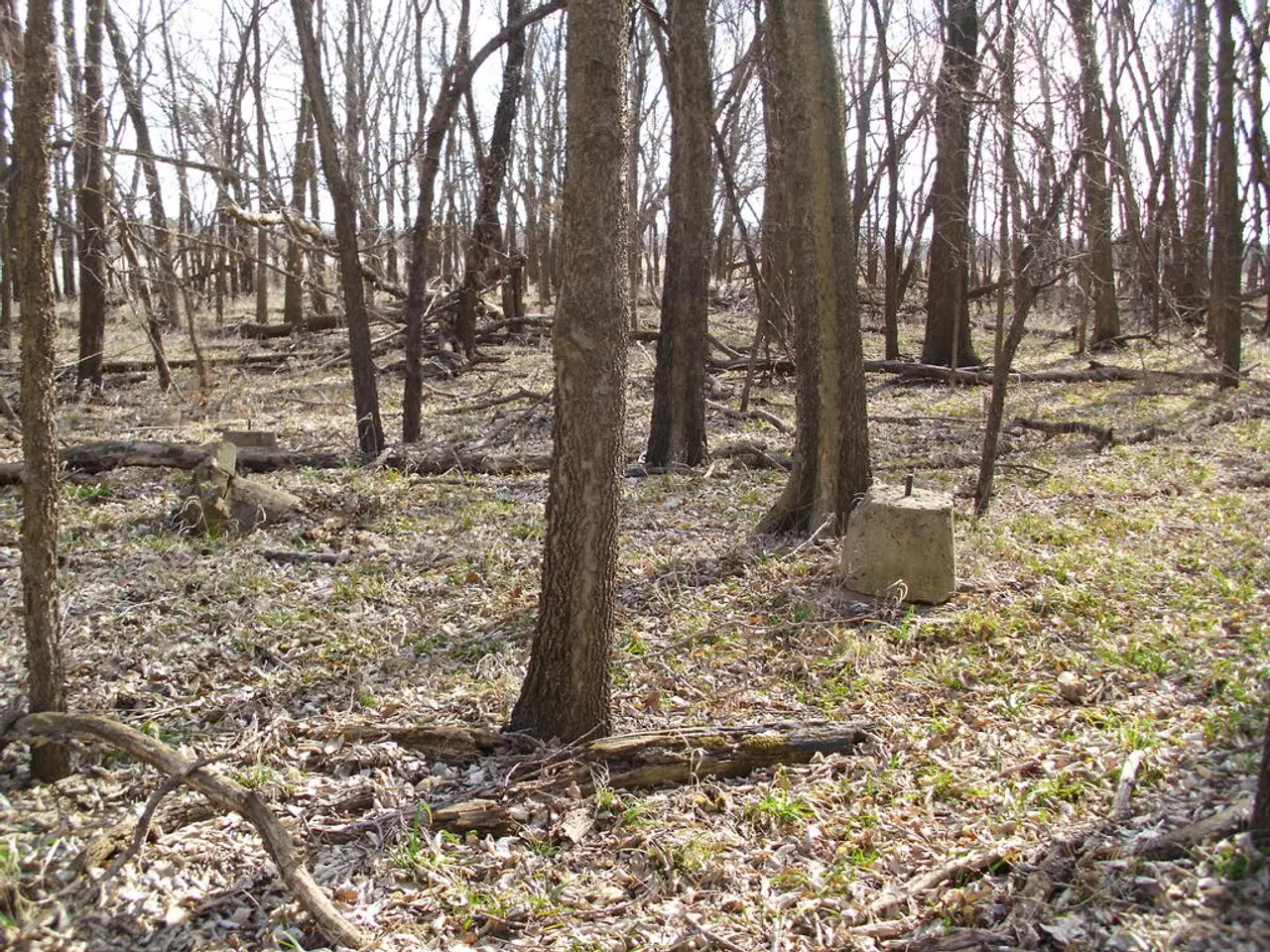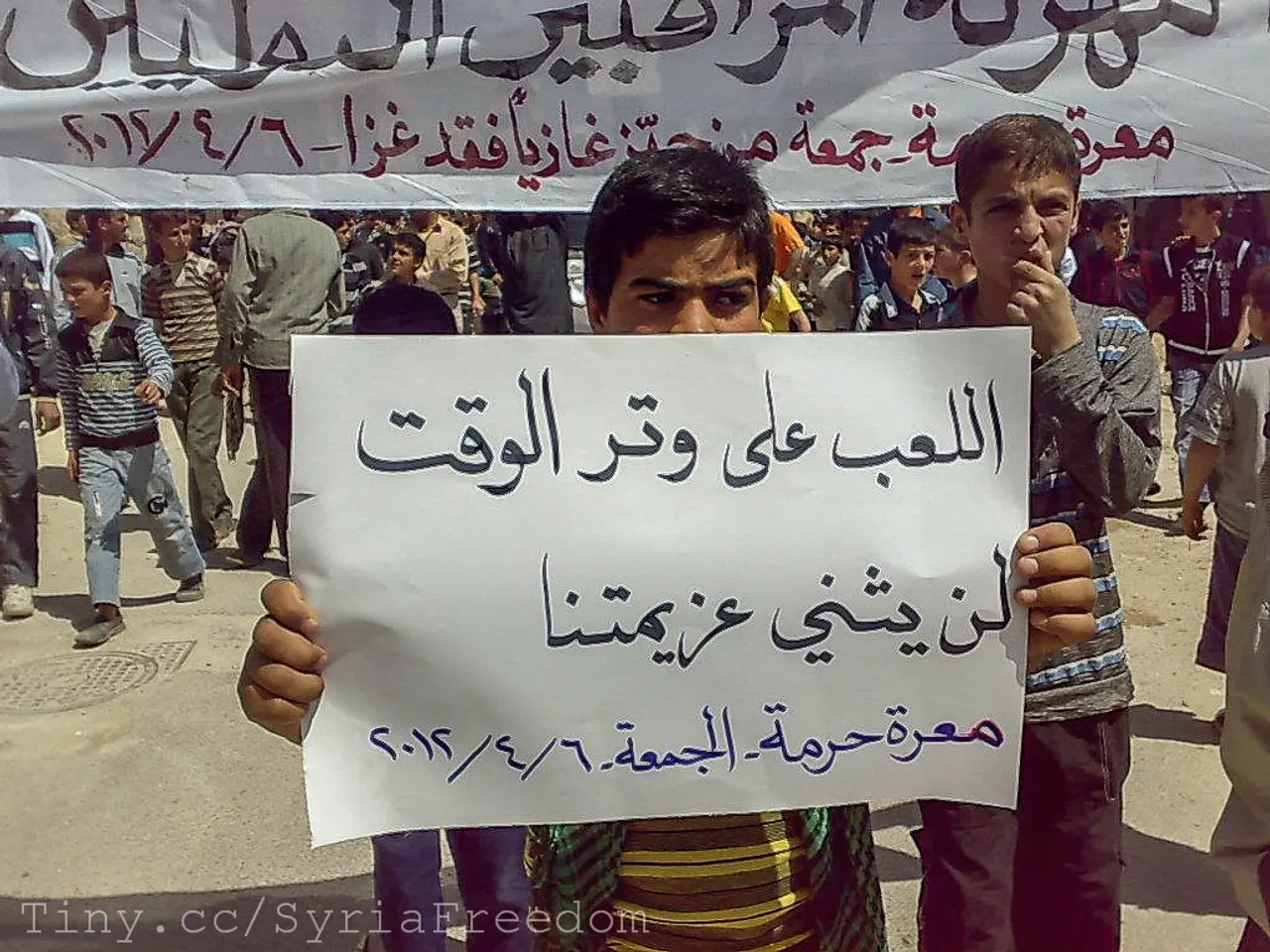Disaster-stricken Java: Deadly Floods and Landslides Cause Overwhelming Losses
In the heart of Indonesia, the bustling city of Jakarta and its surrounding areas are grappling with a daunting challenge: the impending threat of flooding by 2050 due to climate change and geographical factors.
North Jakarta, a region already below sea level, sinks further each year, making it increasingly vulnerable to tidal flooding. This is compounded by the heavy rainfall that characterises Jakarta, which can cause severe flooding and landslides, as seen recently in the region around Bogor, resulting in at least three fatalities and one person still missing.
The area around Bogor, a popular tourist destination in West Java, has been heavily impacted by these landslides, with numerous houses and a school damaged.
To address these challenges, several initiatives have been proposed. The Indonesian government has designated the Giant Sea Wall (GSW) project as a national priority to protect the northern coast of Java, including North Jakarta, from tidal flooding and land subsidence. President Prabowo Subianto has emphasised the importance of this project, which involves creating an authority to ensure sustainable implementation.
The Jakarta Provincial Government is also constructing a 1.4-kilometer-long embankment in Muara Angke to mitigate tidal flooding. This project is part of the broader strategies to support the National Capital Integrated Coastal Development (NCICD) initiative.
Additional measures include installing more water pumps in coastal areas to enhance flood management capabilities. However, these are short-term solutions, and experts call for integrating flood management into the National Strategic Projects to prioritise and accelerate solutions, acknowledging that current measures are insufficient for addressing the scale of the problem.
The government also recognises the need for tailored solutions, such as building walls in some areas and planting mangroves in others, to address the varying challenges across different regions.
Moreover, both national and Jakarta disaster management agencies conduct weather modification operations, such as cloud seeding, to reduce rainfall over land by triggering it over the sea. However, these are considered short-term solutions and not permanent fixes.
As the city of Jakarta continues to battle the impacts of climate change, with parts of the capital currently underwater due to the heavy rain, it is clear that urgent action is needed to protect its future. The coming days are predicted to bring more heavy rain, making the need for effective flood management strategies more pressing than ever.
- Science and environmental science are playing crucial roles in addressing the imminent flooding threat in Jakarta by 2050, as experts are actively researching and proposing integrated flood management solutions.
- Weather forecasting plays a vital part in preserving the city, as both national and Jakarta disaster management agencies utilize weather modification operations, such as cloud seeding, to manage excessive rainfall, aiming to reduce its impact on the city.
- The ongoing climate change and weather patterns exacerbate the flooding risks in the city of Jakarta, highlighting the significance of climate-change studies in developing long-term, effective flood management strategies, complemented by environmental-, weather- and science-based approaches.








